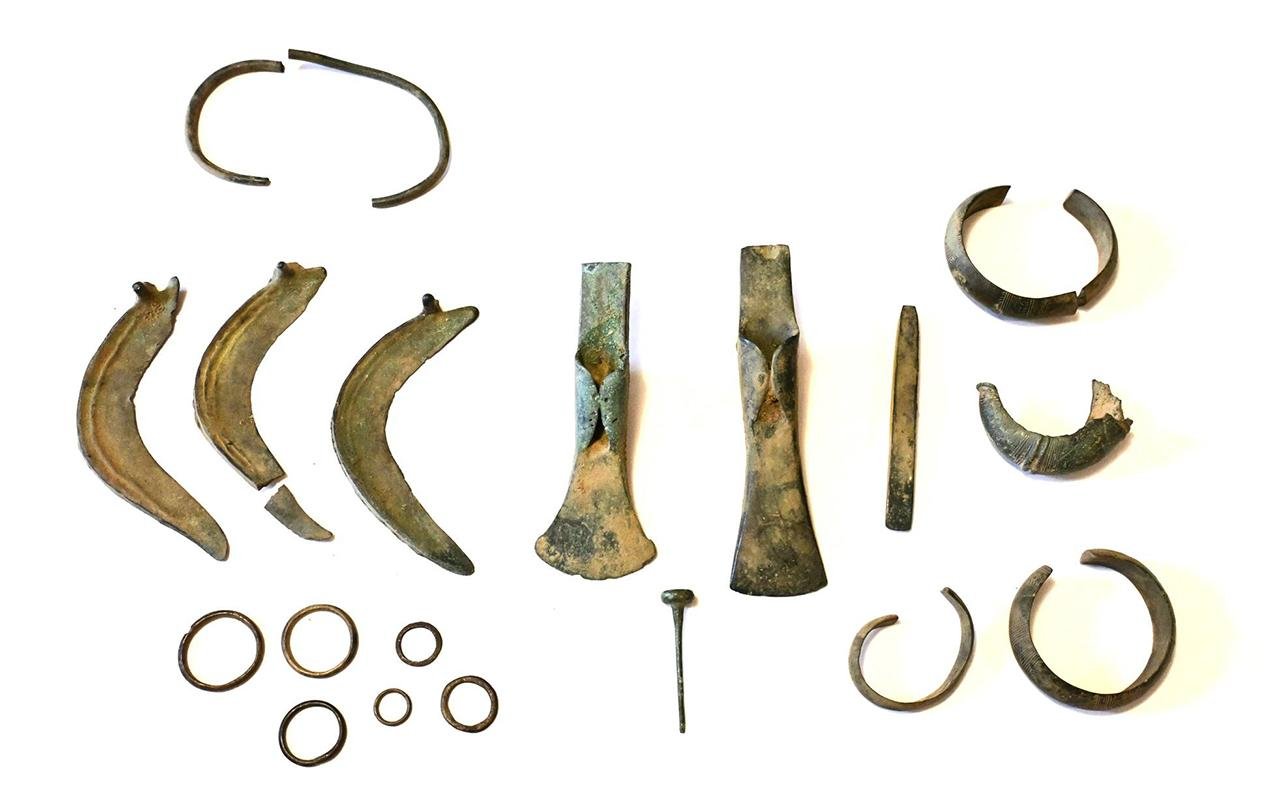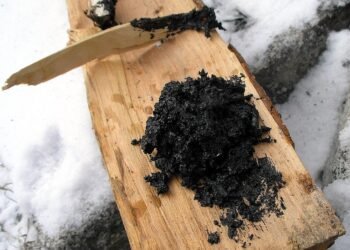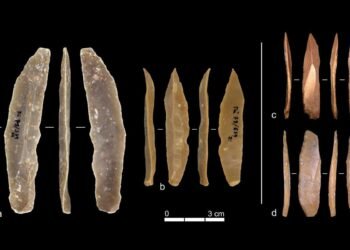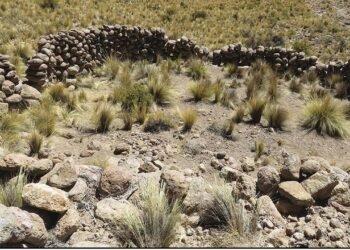Metal detectorists affiliated with the Drossen Lubuskie Association have uncovered a scattered deposit of Bronze Age artifacts in the vicinity of the Polish town of Słubice.

The group, conducting a survey with authorization from the Lubusz Provincial Conservator of Monuments, uncovered this Bronze Age deposit and promptly notified the Provincial Office for the Protection of Monuments in Gorzów Wielkopolski.
The discovery, made in an area known as Lynx Field, includes three sickles, two axes, four bracelets (three of them adorned), six rings, two-rod fragments, and a fragment of a bronze pin. Additionally, traces of foundry waste were found, indicating the presence of bronzesmithing activities in the region.
According to the Marshal’s Office of the Lubuskie Voivodeship, this finding bears resemblance to a prior discovery near Gubin, associated with the Lusatian Urnfield culture from the Bronze Age. The Lusatian culture, concurrent with the Trzciniec culture, integrated local communities into a socio-political network during the Late Bronze Age and Early Iron Age. Bronze objects held significant value during this era, often hidden during conflicts or to deter theft. Ritualistic practices, such as votive offerings, are also plausible explanations for such deposits.

Archaeologists have refrained from commenting on the discovery’s significance, although its resemblance to previous finds suggests a connection to bronzesmiths’ treasures. These treasures, comprising a variety of objects from ornaments to weaponry, were often concealed due to the turbulent times and the high value of bronze.
Under the Act of July 23, 2003, metal detecting in Poland requires permission from the Provincial Conservator of Monuments. The exemplary conduct of the Drossen Lubuskie Association, promptly reporting the discovery in accordance with authorization conditions, has been lauded by district archaeological authorities.
Future verification studies will be conducted, with the newly discovered site slated for inclusion in the provincial registry of monuments. Access to the site has been restricted to allow further exploration by authorities, and the artifacts will be transferred to a museum for study and conservation.























